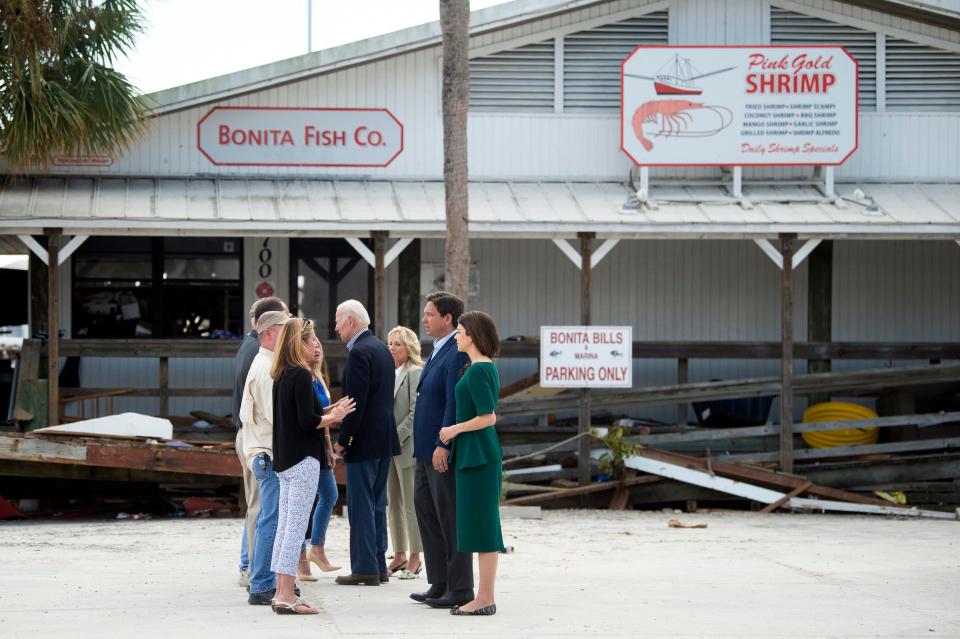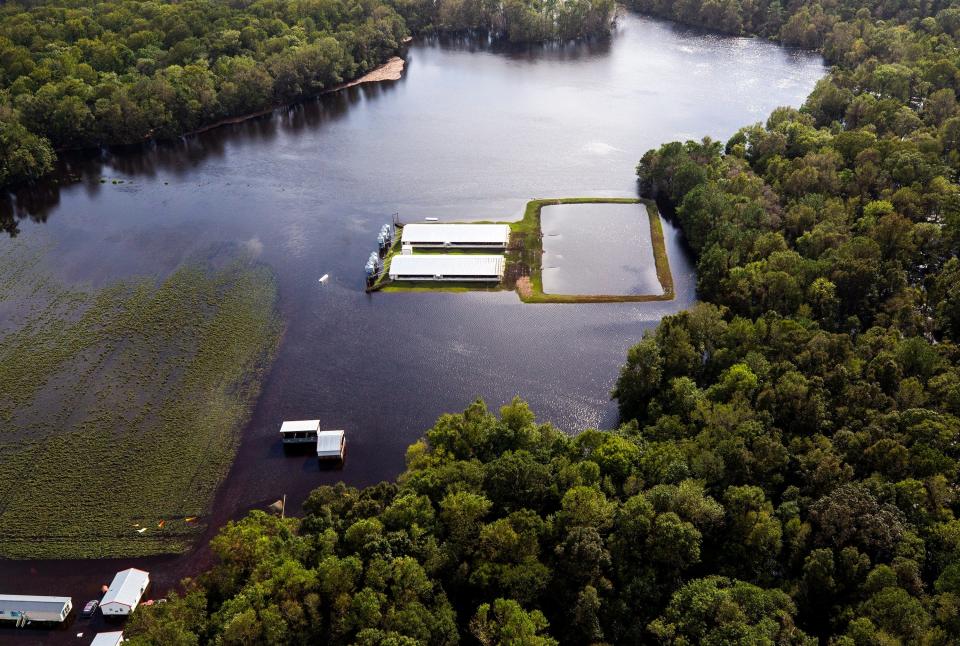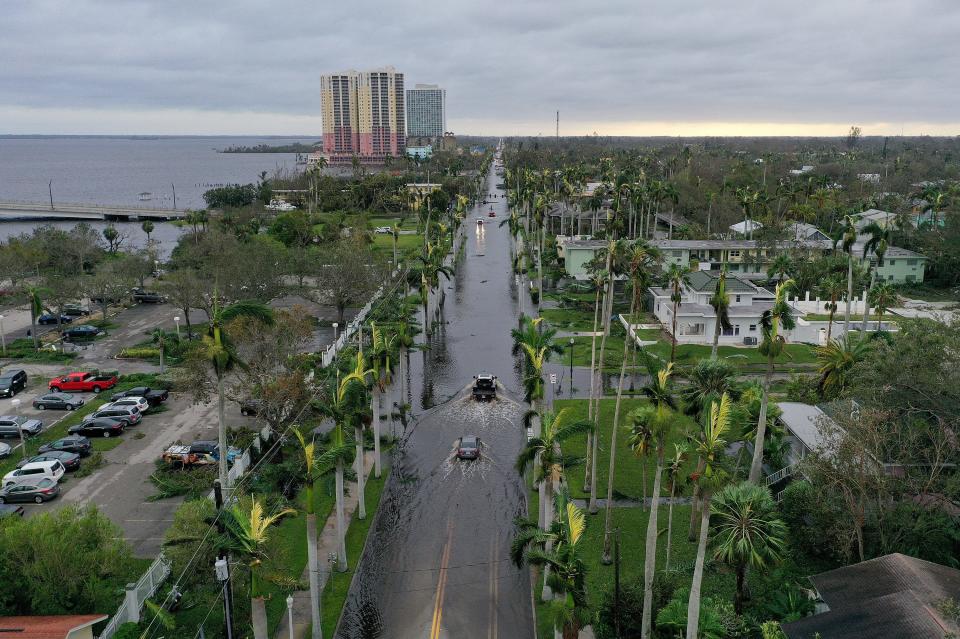Learning from Hurricane Ian: Why we should prepare for more storms like it
Hurricane Ian was one for the record books.
While North Carolina might not have seen the storm's full force, southwest Florida was not as fortunate. The monster storm slammed into the Sunshine State about 125 miles south of Tampa Bay with sustained winds of 150 mph, rainfall amounts of more than 30 inches, and storm surge of more than 12 feet in places. The hurricane was the 15th Category 4 or stronger storm to strike Florida since record-keeping began in 1851, and among eight storms tied as the fifth strongest storm on record to hit the mainland U.S.
That a strong hurricane hit Florida, even the area around Fort Myers, isn't unusual. Hurricane Charley, another Category 4 storm, barreled ashore almost exactly where Ian hit in 2004.
But Ian was a poster child storm for what climatologists have been warning about for years as a result of climate change, combining all of the threats a hurricane pose and then supercharging them as it made landfall.
"I think the one thing this has finally ended is a discussion about whether or not there’s climate change and we should do something about it," said President Joe Biden, who has made mitigating climate change a priority during his first term in office, during a tour of the devastated Florida coast on Wednesday.

Dr. Michael Mann, director of the Earth System Science Center at Penn State University, said storms like Ian adds to the growing body of evidence that global warming is making storms more intense and destructive.
Fueling storms:Coastal areas love their clean air. A new study finds that hurricanes do, too
Building back better:Years after Hurricanes Florence and Matthew, resiliency the focus of NC recovery efforts
"The science is very clear on this − the very clear increase in powerful, devastating hurricanes is driven by human-caused warming," he said. "And it’s worse than a 'new normal' − it’s instead a moving baseline. As long as we continue to warm the planet with carbon pollution from fossil fuel burning, these impacts will continue to get worse."
Scientists say climate change is warming the world's oceans, lending energy to hurricanes. That fuels wind speeds and increases storm surge. The storms are also getting bigger and wetter, as warmer air allows hurricanes to absorb more ocean water.
That, in turn, is slowing down storms, allowing them to drench and pound areas for longer than in the past. North Carolina has experienced this first hand with Hurricanes Matthew in 2016 and Florence in 2018 dropping historical rainfall amounts − measured in feet, not inches, in many places − in Eastern North Carolina.

Researchers from Stony Brook University estimated that Florence's rainfall was 50% greater than normal due to global warming. And that wasn't the only change due to climate change.
"We further find that the storm will remain at a high category on the Saffir-Simpson scale for a longer duration and that the storm is approximately 80 km (50 miles) in diameter larger at landfall because of the human interference in the climate system," the researchers wrote.
Considering 'managed retreat'
Sea-level rise is adding to the dangers associated with these monster storms, with a recently released report from the National Oceanic and Atmospheric Administration (NOAA) projecting parts of the East and Gulf Coasts will see an additional 1.5 feet of additional rise by 2050 based on the current rate of greenhouse gas emissions. Waters off Wilmington have already risen by nearly 1 foot since 1950.
Rising seas means ocean water can push farther inland, putting pressure on homes, roads and utilities that might not be as "hardened" to deal with overwash concerns as areas closer to the oceanfront.
Scientists warn that the greater threat posed by these storms fueled by climate change will mean officials will have to make hard decisions when it comes to reviewing new development proposals in coastal areas and whether it's wise − from a safety and economic point of view − to allow rebuilding to take place in increasingly vulnerable areas hit by hurricanes.
Southwest Florida and its devastated barrier islands and beach towns could be a litmus test to see if the knee-jerk reaction to rebuild back the way it was pre-storm has changed.
Mann said while it might be an unpopular word in many circles, "managed retreat" is one of the adaptive strategies coastal officials will have to engage in if they want to create resilient and viable communities that protect people and property in a world buffeted by climate change.
Changing times:On the Outer Banks, structures rise and fall as climate change looms
But he said an even worse decision would be for officials to ignore what's happening before their eyes. That includes recent events like this summer's Hurricane Fiona, which destroyed Puerto Rico's power grid before hitting Canada's Maritimes as the strongest storm ever to hit the country.

That follows a 2016 storm in Louisiana, Hurricane Harvey in Texas in 2017, and the aforementioned Hurricane Florence in 2018 − the three highest rainfall events in the U.S. since World War II. Four major hurricanes also hit Louisiana in 2020 and 2021, devastating the state and leading to a meltdown of Louisiana's insurance market.
"We need to adapt to those changes which are now inevitable, while preventing (through climate policies) those changes that aren’t," Mann said.
Reporter Gareth McGrath can be reached at GMcGrath@Gannett.com or @GarethMcGrathSN on Twitter. This story was produced with financial support from 1Earth Fund and the Prentice Foundation. The USA TODAY Network maintains full editorial control of the work.
This article originally appeared on Wilmington StarNews: Hurricane Ian is a sign of storms to come due to climate change

